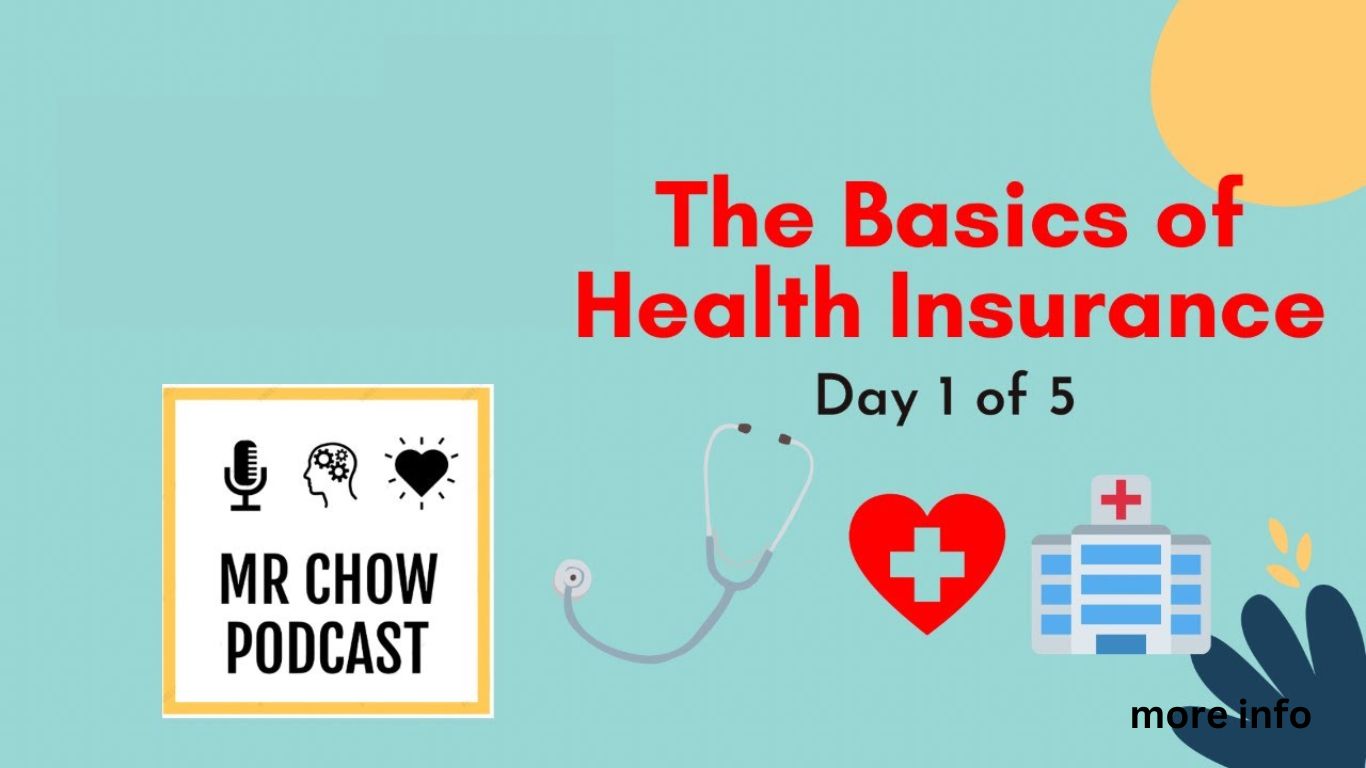The Basics of Health Insurance: What You Need to Know. Health care coverage is a major part of overseeing medical services costs and guaranteeing admittance to clinical benefits. It gives monetary insurance by covering a piece of the costs caused by medical care administrations, going from standard check-ups to crisis medical procedures. The Basics of Health Insurance: What You Need to Know. Understanding the nuts and bolts of health care coverage is fundamental for settling on informed conclusions about inclusion choices, expenses, and advantages. The Basics of Health Insurance: What You Need to Know. This guide investigates the essential parts of health care coverage, engaging people to successfully explore the intricacies of medical care.
Why Medical Coverage Matters
Medical coverage fills a few basic needs, including:
- Monetary Protection: It mitigates the significant expenses related to clinical consideration, keeping people and families from confronting significant personal costs.
- Admittance to Healthcare: Healthcare coverage gives admittance to an organization of medical services suppliers, guaranteeing ideal clinical consideration and therapies.
- Preventive Care: Numerous health care coverage plans cover preventive administrations like inoculations and screenings, advancing early discovery and illness avoidance.
Key Terms in Medical Coverage
Before diving into the kinds of healthcare coverage plans, find out more about these key terms:
- Premium: The sum paid to the insurance agency for inclusion, typically consistently.
- Deductible: The sum you should pay personally for clinical costs before your protection starts to take care of expenses.
- Co-installment (Co-pay): A decent sum you pay for specific clinical benefits or remedies.
- Co-insurance: The level of costs you pay for covered administrations after meeting your deductible.
- Personal Maximum: The greatest sum you need to pay for canvassed administrations in an arrangement year, after which the protection pays 100 percent of taken care of expenses.
Understanding these terms will assist you with getting a handle on how healthcare coverage plans work and what’s in store regarding expenses and inclusion.
Sorts of Medical Coverage Plans
Healthcare coverage plans in the US can be sorted into a few fundamental sorts, each with its highlights and cost-sharing plans:
1. Wellbeing Upkeep Association (HMO)
Well-being Upkeep Associations (HMOs) offer extensive medical care administrations through an organization of specialists, clinics, and other medical services suppliers. Key elements include:
- Essential Consideration Doctor (PCP): HMO individuals are expected to pick an essential consideration doctor who organizes their consideration and gives references to subject matter experts.
- Network Restrictions: Inclusion is commonly restricted to suppliers inside the HMO organization, besides in crises.
- Lower Costs: HMOs frequently have lower expenses and personal expenses contrasted with different plans yet expect individuals to utilize network suppliers.
HMOs are reasonable for people who are inclined toward having a PCP deal with their medical services needs and are OK with network limitations.

2. Favored Supplier Association (PPO)
Favored Supplier Associations (PPOs) offer greater adaptability in picking medical care suppliers compared with HMOs. Key elements include:
- Supplier Network: PPOs have an organization of favored specialists, trained professionals, and emergency clinics. Individuals can see any supplier, both in-network and out-of-network, without a reference.
- Cost Flexibility: While expenses might be higher than HMOs, PPOs offer lower personal expenses for out-of-network care.
- No References Needed: Individuals needn’t bother with a PCP or references to see experts inside the organization.
PPOs are reasonable for people who focus on adaptability in medical care supplier decisions and will pay higher charges for lower personal expenses.
3. Restrictive Supplier Association (EPO)
Selective Supplier Associations (EPOs) are like PPOs yet ordinarily have stricter organization limitations. Key elements include:
- Network Limitations: EPO individuals should utilize suppliers inside the assigned organization. Out-of-network care is for the most part not canvassed besides in crises.
- Lower Costs: EPOs might offer lower expenses contrasted with PPOs however regularly have higher personal expenses for out-of-network care.
- No References Needed: Like PPOs, EPO individuals needn’t bother with a PCP or references to see experts inside the organization.
EPOs are reasonable for people who need lower charges than PPOs yet are right with network limitations like HMOs.
4. Customer-facing interaction (POS)
Customer-facing interaction (POS) plans join components of HMOs and PPOs, offering adaptability with network limitations. Key highlights include:
- Essential Consideration Doctor (PCP): POS plans expect individuals to pick a PCP who facilitates their consideration and gives references to experts inside the organization.
- Out-of-Organization Coverage: POS plans might offer restricted inclusion for out-of-network care, regularly at a greater expense to the part.
- Costs: POS designs for the most part have lower charges contrasted with PPOs and comparable personal expenses for PPOs for out-of-network care.
POS plans are reasonable for people who favor having a PCP coordinate their considerations yet believe the choice should look for care outside the organization without a reference.
5. High Deductible Wellbeing Plan (HDHP) with Wellbeing Bank account (HSA)
High Deductible Wellbeing Plans (HDHPs) are portrayed by higher deductibles and lower charges contrasted with customary plans. Key highlights include:
- High Deductible: HDHPs have higher deductibles that should be met before the arrangement begins covering clinical costs.
- Wellbeing Bank account (HSA): HDHP individuals can open an HSA, a duty-advantaged bank account to pay for qualified clinical costs. Commitments to a HSA are charge deductible, and assets turn over year to year.
- Preventive Care: HDHPs commonly cover preventive administrations before the deductible is met, as legally necessary.
HDHPs with HSAs are reasonable for people who are by and large sound and need to save money on charges while having the choice to put something aside for future clinical costs tax-exempt.
6. Devastating Medical coverage
Devastating health care coverage gives inclusion to significant clinical costs if there should be an occurrence of a difficult ailment or injury. Key highlights include:
- High Deductibles: Devastating plans have high deductibles that should be met before inclusion kicks in.
- Restricted Coverage: These plans by and large give inclusion to fundamental medical advantages after the deductible is met.
- Eligibility: Devastating plans are normally accessible to people under 30 or those with a difficulty exception.
Horrendous health care coverage is appropriate for people who are for the most part sound and need assurance against huge clinical costs without paying high charges.
Picking the Right Health care coverage Plan
While choosing a health care coverage plan, consider the accompanying variables to guarantee it meets your medical services needs and monetary inclinations:
- Inclusion Needs: Survey your clinical history, expected medical care expenses, and favored specialists or clinics.
- Costs: Look at charges, deductibles, co-installments, and co-protection across various designs to comprehend your expected personal expenses.
- Supplier Networks: Check if your ongoing medical care suppliers are in the organization to augment inclusion and limit costs.
- Extra Benefits: Consider additional advantages like physician-endorsed drug inclusion, well-being programs, and telehealth administrations that might mean a lot to you.
- Monetary Stability: Pick a trustworthy protection supplier with a background marked by monetary security and great client care.
End
Exploring the scene of medical coverage choices requires understanding the subtleties of each plan type and how they line up with your medical care needs and monetary circumstances. Whether you focus on adaptability in supplier decisions, low charges, or thorough inclusion, there’s a medical coverage plan custom-fitted to meet your inclinations. By evaluating your requirements and contrasting arrangement highlights, you can pursue an educated choice that furnishes you and your family with vital medical care and genuine serenity. Keep in mind, that choosing the right healthcare coverage plan is an interest in your well-being and monetary prosperity, guaranteeing you approach quality medical services when you want them most.
